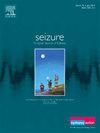MRI在老年患者中的应用——重点综述。
IF 2.8
3区 医学
Q2 CLINICAL NEUROLOGY
引用次数: 0
摘要
核磁共振成像大大增加了我们对与年龄有关的大脑异常的病理生理学知识。老年人MRI上常见的脑异常是萎缩,以及与小血管疾病(SVD)相关的变化。svd相关的改变包括白质高信号(WMH)、腔隙、微出血、微梗死和血管周围间隙。虽然萎缩、WMH和腔隙被认为是认知能力下降和痴呆的重要因素,但微出血、微梗死和血管周围间隙之间的关系尚不清楚。血管危险因素在这些变化的发展中被认为是至关重要的,并且潜在的可修改性已经成为研究人员和临床医生越来越感兴趣的问题。早期管理血管风险,特别是高血压,是减缓与年龄相关的大脑异常演变和减缓其有害认知后果的关键因素。认知和可见的大脑异常有着复杂的关系,这远远超出了我们使用标准MRI所能理解的范围。损伤的远程影响和相关的以及独立的网络变化可能解释了随着年龄的增长所观察到的不同的认知轨迹。由于MRI在包括癫痫在内的各种疾病的诊断中的多功能性,在老年人的标准MRI上将更频繁地遇到脑老化的事件迹象。为了便于理解并最终向患者报告这些变化,本综述将简要概述老年人MRI的MRI结果。我们将讨论其病理、危险因素以及与认知的关系。将特别强调最近的发展,包括病变的远程影响,以及对脑结构网络的影响。老年人的MRI结果与癫痫之间的关系也将被讨论。本文章由计算机程序翻译,如有差异,请以英文原文为准。
MRI in older patients—A focused review
MRI has considerably increased our pathophysiological knowledge of age-related brain abnormalities. Brain abnormalities regularly seen on MRI of older adults are atrophy, and changes related to small vessel disease (SVD). SVD-related changes include white matter hyperintensities (WMH), lacunes, microbleeds, microinfarcts and perivascular spaces. While atrophy, WMH and lacunes are recognized as important contributors to cognitive decline and dementia, relationships are less clear for microbleeds, microinfarcts and perivascular spaces. Vascular risk factors are considered critical in the development of these changes and being potentially modifiable have become increasingly interesting to researchers and clinicians alike. Managing vascular risk early, particularly hypertension, is a key factor in slowing down the evolution of age-related brain abnormalities and decelerate their detrimental cognitive consequences. Cognition and visible brain abnormalities have a complex relationship, which reaches far beyond what we can understand using standard MRI. Remote effects of lesions and associated- as well as independent network changes likely explain much of the different cognitive trajectories observed with aging. Because of the versatility of MRI in the diagnostic of various diseases, including epilepsy, incident signs of brain aging will be encountered ever more frequently on standard MRI of older adults. To facilitate understanding and ultimately reporting these changes to patients, this review will give a brief overview of MRI findings encountered on MRI of older people. We will discuss their pathology, risk factors, and relationships with cognition. Special emphasis will be given to more recent developments, including remote effects of lesions, and effects on the structural brain network. Relationships between MRI findings in older people and epilepsy will be discussed as well.
求助全文
通过发布文献求助,成功后即可免费获取论文全文。
去求助
来源期刊

Seizure-European Journal of Epilepsy
医学-临床神经学
CiteScore
5.60
自引率
6.70%
发文量
231
审稿时长
34 days
期刊介绍:
Seizure - European Journal of Epilepsy is an international journal owned by Epilepsy Action (the largest member led epilepsy organisation in the UK). It provides a forum for papers on all topics related to epilepsy and seizure disorders.
 求助内容:
求助内容: 应助结果提醒方式:
应助结果提醒方式:


